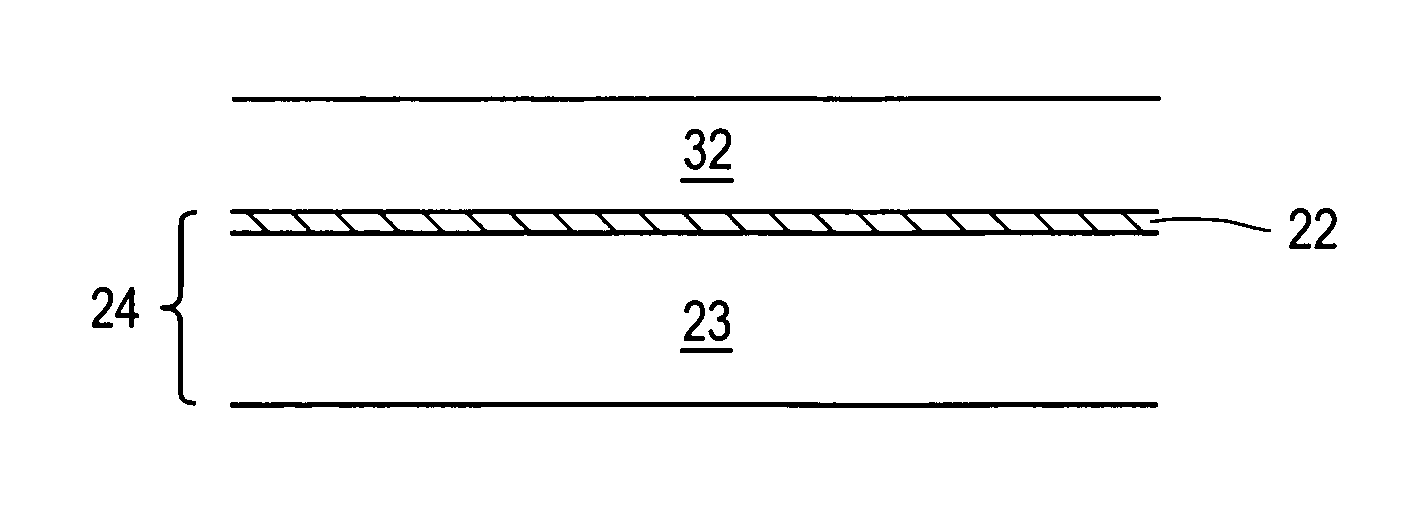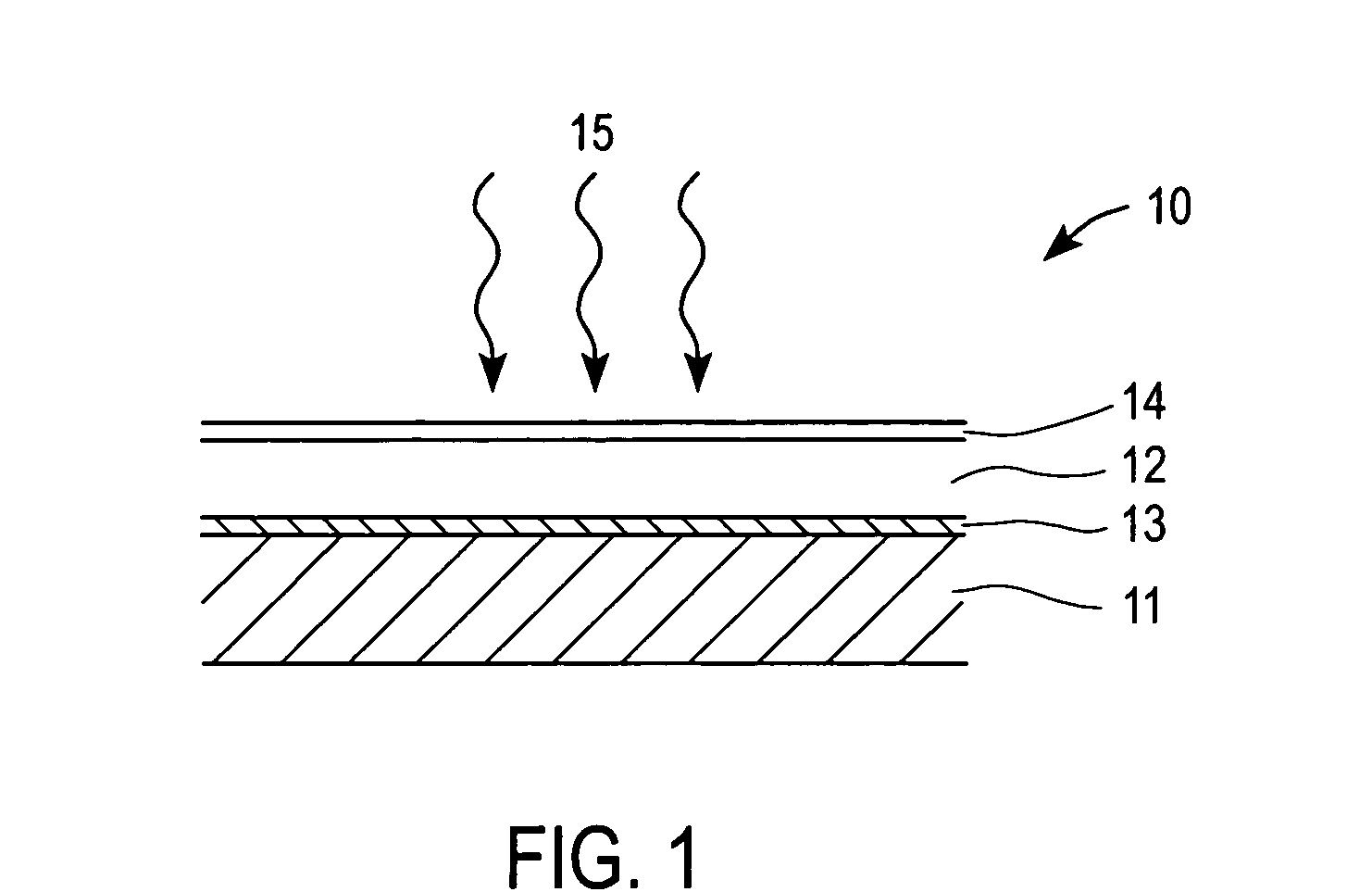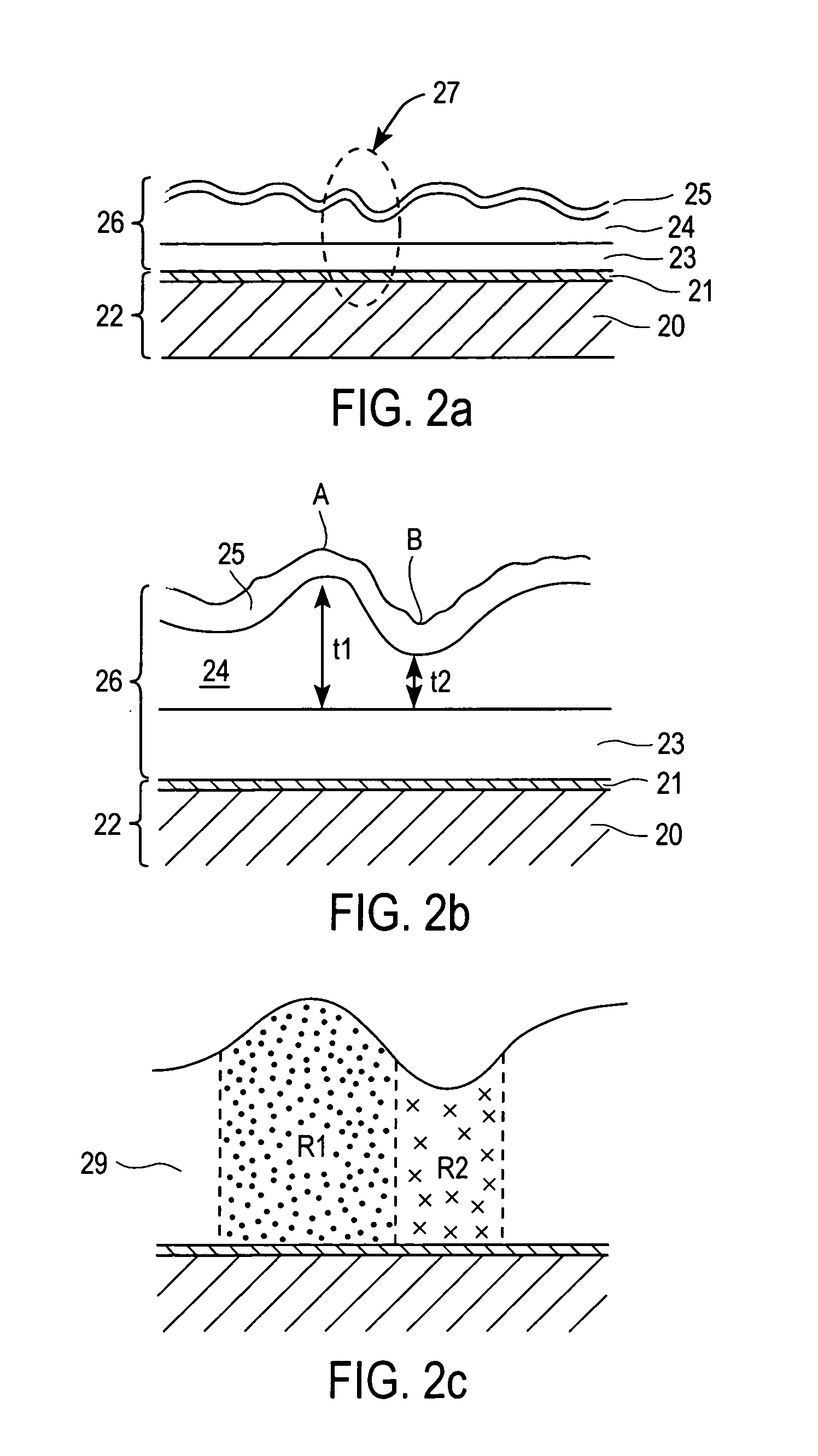Technique and apparatus for depositing layers of semiconductors for solar cell and module fabrication
a technology of solar cells and layers, applied in the direction of electrical equipment, semiconductor devices, basic electric elements, etc., can solve the problems of high equipment cost, low material utilization, and high cost of equipment, and achieve low material utilization, low throughput, and high equipment cost
- Summary
- Abstract
- Description
- Claims
- Application Information
AI Technical Summary
Benefits of technology
Problems solved by technology
Method used
Image
Examples
example 1
[0060] A Mo coated glass sheet may be used as the base. A 100 nm thick Cu layer may be deposited over the Mo layer. This is then followed by the deposition of a 220 nm thick In film and a 40 nm thick Ga layer. The stack is annealed at a temperature of 80-200° C. for 5-600 seconds to enhance alloying between Cu, In and Ga. Over the alloyed layer, 100 nm of Cu, 220 nm of In and 40 nm of Ga are then deposited or applied. The precursor is selenized by well known approaches such as in hydrogen selenide gas or selenium vapor to form the Cu0.8In0.8Ga0.2Se1.9 compound. It should be noted that selenization may be carried out by various other means such as depositing Se over the metallic precursor and heating up the stacked layer, heating the substrate in a Se-containing gaseous or liquid atmosphere etc. for times ranging from 5 minutes to 60 minutes.
example 2
[0061] A Mo coated glass sheet may be used as the base. A 100 nm thick Cu layer may be deposited over the Mo layer. This is then followed by the deposition of a 220 nm thick In film and a 40 nm thick Ga layer. The stack is annealed at a temperature of 80-200° C. for 5-600 seconds to enhance alloying between Cu, In and Ga. Over the alloyed layer, a 100 nm of Cu, a 220 nm of In and 40 nm of Ga are then deposited. A second anneal step is applied at 80-200° C. for 5-600 seconds to promote further alloying between the layers of the metallic precursor. The precursor thus obtained is then selenized by well known approaches such as in hydrogen selenide or selenium vapor to form the Cu0.8In0.8Ga0.2Se1.9 compound. It should be noted that selenization may be carried out by various other means such as depositing Se over the metallic precursor and heating up the stacked layer, heating the substrate in a Se-containing gaseous or liquid atmosphere etc. for times ranging from 5 minutes to 60 minute...
example 3
[0062] The approaches in Example 1 or Example 2 are used except that Cu, In and Ga layers may be deposited in four steps instead of two steps. Accordingly, thickness of Cu, In and Ga for each deposition step may be reduced to 50 nm, 110 nm and 20 nm, respectively. By heat treating the layers after each deposition step for reduced times of preferably 2-300 seconds (except for the last one for the case of Example 1), a smooth and compositionally uniform metallic precursor may be obtained. Selenization of this precursor yields compositionally uniform, high quality Cu0.8In0.8Ga0.2Se1.9 compound layer.
[0063] In another embodiment of the present invention the morphology of the deposited films are further improved and the micro-scale compositional uniformity is further enhanced by dividing the metallic precursor preparation step into at least two sub-steps and selecting the composition of the sub-layers deposited by the sub-steps such that the sub-layers deposited early on the base do not...
PUM
 Login to View More
Login to View More Abstract
Description
Claims
Application Information
 Login to View More
Login to View More - Generate Ideas
- Intellectual Property
- Life Sciences
- Materials
- Tech Scout
- Unparalleled Data Quality
- Higher Quality Content
- 60% Fewer Hallucinations
Browse by: Latest US Patents, China's latest patents, Technical Efficacy Thesaurus, Application Domain, Technology Topic, Popular Technical Reports.
© 2025 PatSnap. All rights reserved.Legal|Privacy policy|Modern Slavery Act Transparency Statement|Sitemap|About US| Contact US: help@patsnap.com



